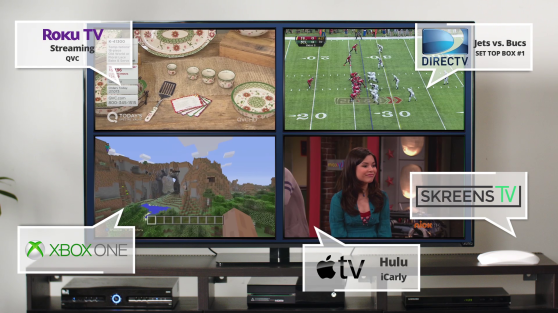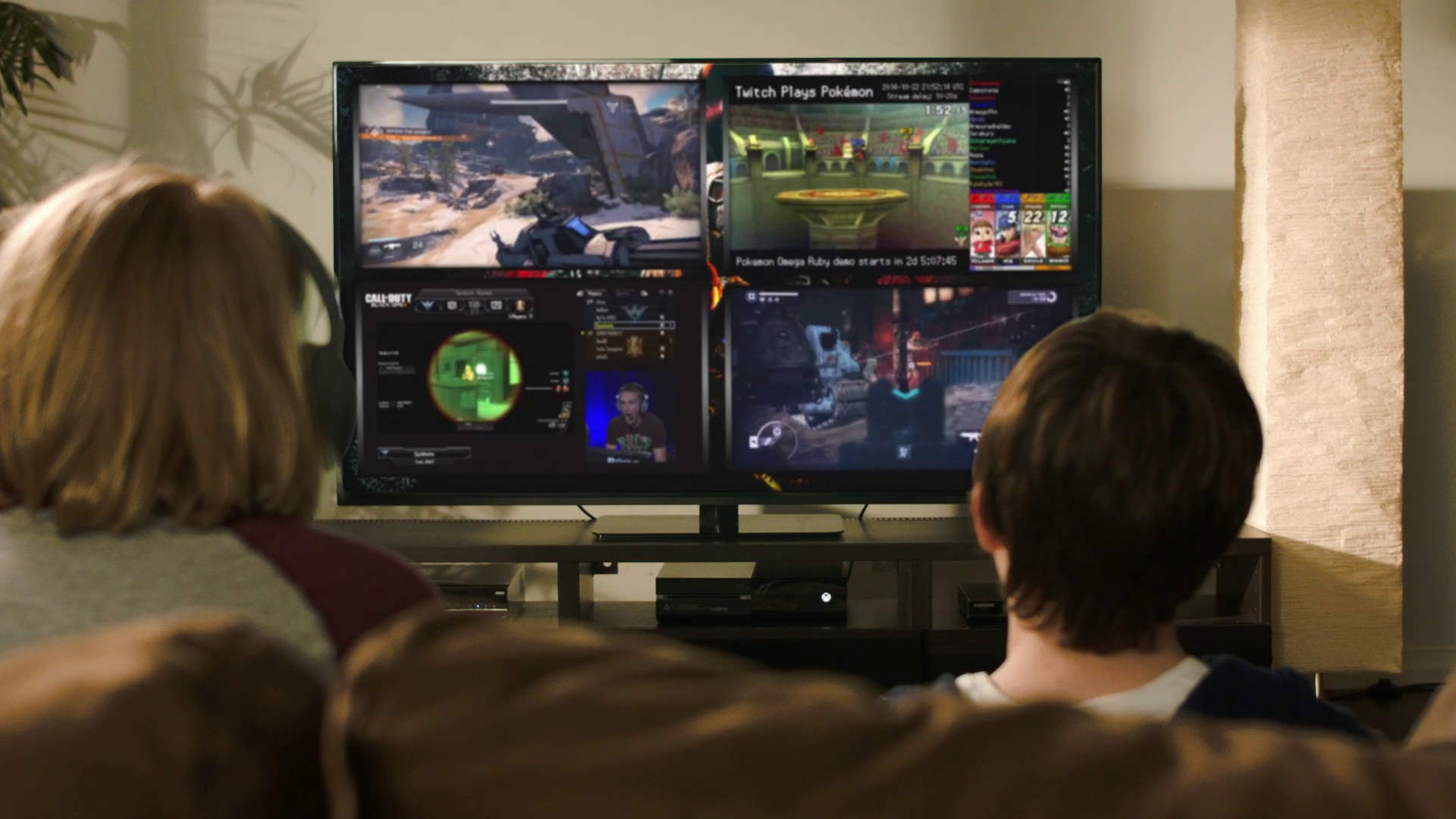SkreensTV is unveiling a system that lets you divide your big-screen TV into multiple screens, allowing you to multitask or to allow family members to watch their favorite shows at the same time on the same TV.
You can use it to simultaneously watch, play, and stream anything you want. A kid can play the latest Call of Duty, while parents watch a sitcom and a sibling watches a televised concert on headphones. You have to admit. It’s a pretty good idea, and one the cable TV and game companies should have thought about a long time ago. On the other hand, it isn’t cheap to do, as Skreens will be targeting a $500 price when it gets to retail.
The SkreensTV set-top box gives you a way to keep family members together while multitasking in the same room. And it delivers what you want when you want it. Boston-based SkreensTV is launching a crowdfunding campaign on Indiegogo today so it can raise money to build and launch the device in 2015.
“The TV is the biggest screen we own, but its range is painfully limited,” said Marc Todd, founder and CEO, in an interview with VentureBeat. “SkreensTV lets you unleash your TV. Everyone gets access to the TV at once. I believe this is the future of TV.”

SkreensTV can combine cable TV, sports, gaming, apps, web sites, and social media on a single screen. If you’re watching a sports event on cable, you can also watch people commenting on a Twitter or Facebook feed at the same time. It’s like a switch box for your cables, but you can watch everything at once.
It uses a patent-pending web-based HTML5 user interface to weave five HDMI inputs together from multiple sources. It significantly improves the capabilities of any TV, letting you watch live TV on one part of the screen while someone else plays a console game on another part.
In contrast to picture-in-picture capabilities in some TVs, SkreensTV lets you control the size of each window on the TV. You can use the SkreensTV iOS or Android app to choose and create the layout of your TV screen from your smartphone or tablet. You can make changes dynamically, and save your favorite templates.
This fits with the modern way of watching TV. Market researcher Nielsen reported that Americans spend more than 20 percent of their time watching traditional TV and 86 percent of US smartphone owners say that they use their devices as second-screens while watching TV. Americans also spend more than $2,000 a year on Internet, TV, cell phone service, and video games. But they can’t combine all of that on one screen.
Each screen streams its audio over Bluetooth or Wi-Fi to tablets or mobile devices so that anyone can listen to the program of their choice via ear buds or headphones. The app also lets you choose which audio is played through the TV itself.
The box comes with a built-in processor, five HDMI inputs, Wi-Fi, Bluetooth, an Ethernet port, two USB ports, a fiber slot, built-in storage memory, and a microSD card reader. It works with all HDMI devices. That means you’ll be able to plug in cable/satellite/IPTV set-top boxes, gaming consoles, laptops, and any other streaming devices such as Apple TV, Chromecast, and Roku. It will have options for storage ranging from 4GB to 64GB.
SkreensTV plans to ship the device for $500 at retail in the winter of 2015. But those who preorder it via the Indiegogo campaign can get it for $400. It works with 1080p high-definition TVs. Cable TV companies and content providers shouldn’t have a problem with SkreensTV, since it is not a recording device, Todd said.
The response time is 30 milliseconds, so there’s no perceivable delay in routing video through the device, Todd said. The experience works best on a 40-inch or larger TV.
SkreensTV uses Xilinx All Programmable technologies so developers can build applications and create logic designs for consumers homes that were previously available only at the professional level.
Todd said that the system will work with third-party TV products, as SkreensTV will share its applications programming interface.
Todd founded the company in 2012. It is self-funded and has 20 employees.



